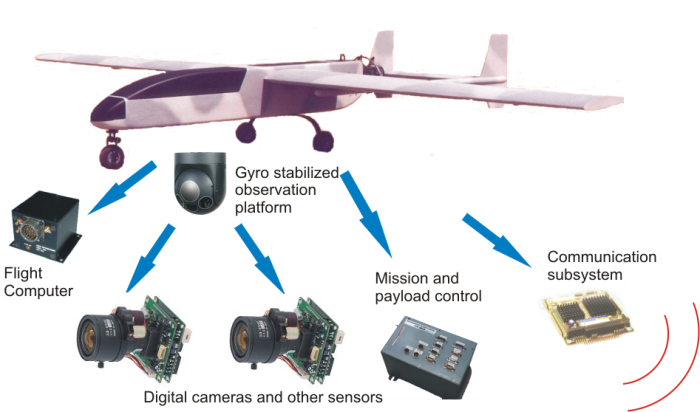A new doctor in ICARUS!
May 27, 2010
Pablo Royo Chic successfully defended his PhD thesis last May 25th 2010
Title: An Open Architecture for the Integration of UAS Civil Applications
Advisers: Dr. Enric Pastor Llorens
Dr. Cristina Barrado Muxí
Available at: www.tesisenxarxa.net
Advisers: Dr. Enric Pastor Llorens
Dr. Cristina Barrado Muxí
Available at: www.tesisenxarxa.net
ABSTRACT:
Currently, Unmanned Aircraft System (UAS) are mostly being used for military applications, but with the evolution of avionics technology, a huge market in civil applications is now emerging. However, there is a lack of hardware and software support to effectively develop these potentialities in the civil domain. In addition, economic efficiency requires the same UAS to be able to operate in different application types and domains.
The main objective of this doctoral thesis was to design and develop a flexible and reusable hardware/software abstraction layer for a UAS distributed architecture in order to carry out different UAS civil missions. The proposed abstraction layer is called UAS Service Abstraction Layer (USAL) which allows the easy and fast design of missions and solves the reusability of the system in a cost-effective way. For this software abstraction layer, a distributed service oriented architecture (SOA) is used. Functional units are implemented as independent services that interact with each other using a Local Area Network (LAN).
From the study of UAS civil missions and the state of the art in the design of UAS architecture, an exhaustive list of self-content services needed in almost all UAS civil missions is offered. Thus, the USAL provides a list of common services needed to develop the different civil missions identified. These services have been organized into four different categories, each containing services that cooperate in the same main objective such as Flight, Mission, Payload and Awareness. The flight category services have been designed, implemented and tested over a simulation platform called ICARUS Simulation Integrated Scenario (ISIS). ISIS provides a test environment in which the USAL components or services that have already been designed can interact with others that are being designed. It also provides an easier and safer way to test the mission application.
Finally, a proof of concept of the USAL has been built using a remote sensing application. This proof of concept and the possible mission strategy have been tested over the ISIS platform as part of the "Sky-Eye" project. The aim of this project is to monitor wild land fires in the Mediterranean area, with special emphasis on the hot-spot monitoring application, and thereby to demonstrate the use and reconfiguration capability of the USAL.
Currently, Unmanned Aircraft System (UAS) are mostly being used for military applications, but with the evolution of avionics technology, a huge market in civil applications is now emerging. However, there is a lack of hardware and software support to effectively develop these potentialities in the civil domain. In addition, economic efficiency requires the same UAS to be able to operate in different application types and domains.
The main objective of this doctoral thesis was to design and develop a flexible and reusable hardware/software abstraction layer for a UAS distributed architecture in order to carry out different UAS civil missions. The proposed abstraction layer is called UAS Service Abstraction Layer (USAL) which allows the easy and fast design of missions and solves the reusability of the system in a cost-effective way. For this software abstraction layer, a distributed service oriented architecture (SOA) is used. Functional units are implemented as independent services that interact with each other using a Local Area Network (LAN).
From the study of UAS civil missions and the state of the art in the design of UAS architecture, an exhaustive list of self-content services needed in almost all UAS civil missions is offered. Thus, the USAL provides a list of common services needed to develop the different civil missions identified. These services have been organized into four different categories, each containing services that cooperate in the same main objective such as Flight, Mission, Payload and Awareness. The flight category services have been designed, implemented and tested over a simulation platform called ICARUS Simulation Integrated Scenario (ISIS). ISIS provides a test environment in which the USAL components or services that have already been designed can interact with others that are being designed. It also provides an easier and safer way to test the mission application.
Finally, a proof of concept of the USAL has been built using a remote sensing application. This proof of concept and the possible mission strategy have been tested over the ISIS platform as part of the "Sky-Eye" project. The aim of this project is to monitor wild land fires in the Mediterranean area, with special emphasis on the hot-spot monitoring application, and thereby to demonstrate the use and reconfiguration capability of the USAL.

Share: